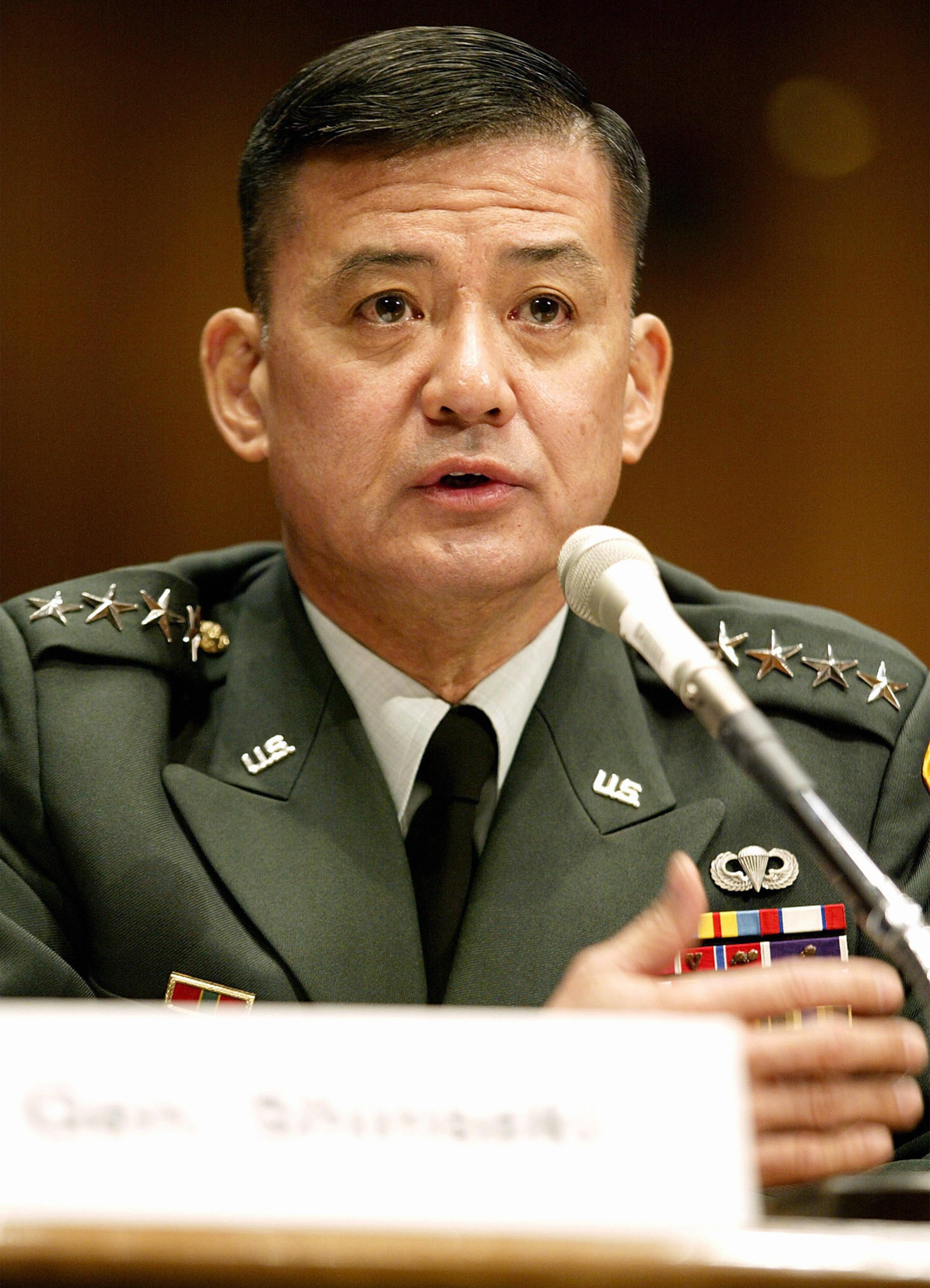
No one would argue that the wars in Afghanistan and Iraq were inexpensive. They’ve cost close to $2 trillion to date, and some projections put their estimated total cost at double that, once all the veterans of those campaigns have been buried.
But there is a pattern that links these wars to the current scandal enveloping the Department of Veterans Affairs and its embattled secretary, retired Army General Eric Shinseki.
“The past few weeks have been challenging,” Shinseki said Friday morning in a talk to a veterans group, where he was greeted with a pair of standing ovations. He is slated to visit the White House later Friday to brief President Obama on the unfolding scandal. The White House has grown noticeably cooler to Shinseki as the agency’s problems have expanded in recent weeks.
The Pentagon, writ large, has long been plagued by what insiders call a “plans-reality mismatch,” where funding for weapons on the drawing boards always falls short on the assembly line. That’s because the designers are too optimistic about the ultimate cost of their blueprints, and too often count on future budgets that shrink, or have been allocated to more pressing needs, once the future arrives.
Why should waging wars being any different than buying the weapons for them?
The White House, colluding with the U.S. military, low-balled the number of troops needed to do the job in both Afghanistan and Iraq. That’s why each spun out of control, requiring troop “surges” in both theaters to turn bad situations around sufficiently to declare some kind of un-defeat.
The repeated deployments of soldiers to both wars led to spikes in traumatic brain injuries and post-traumatic stress disorder, which in turn led to jumps in depression, anxiety, drug use, divorce, suicides and other problems. They would have been reduced if the same troops didn’t have to be recycled in and out of combat, but that would have required an even bigger Army. That was deemed politically untenable. As a result, mental health woes skyrocketed.
When that happened, the Army found it didn’t have sufficient mental health experts to deal with the brain-bruised troops coming home.
Now that many of those troops have hung up their uniforms and are counting on the VA for health care, the VA—surprise—has a shortage of doctors to tend to their needs. The lack of insufficient primary-care physicians—the VA says it has only 93% of the doctors it needs—is a key reason for the “gaming” of the VA’s waiting lists.
A random sample of 266 veterans seeking help at the Phoenix VA showed they “waited on average 115 days for their first primary care appointment with approximately 84 percent waiting more than 14 days,” the agency’s inspector general said in a report released Wednesday. Much of the gaming occurred because of “delays between the veteran’s requested appointment date and the date the appointment was created” by VA appointment schedulers.
The problems, like the proverbial pig in a python, have moved from the battlefield, to Army hospitals, to VA medical centers.
President George W. Bush, Defense Secretary Donald Rumsfeld and their commanders sought to wage war on the cheap. Congress, torn between appearing weak and giving the commander in chief a blank check, basically closed its eyes and crossed its fingers.
The only ones really paying for this sleight-of-scam are the troops, and their families. One of those, of course, is Shinseki. He incurred Rumsfeld’s wrath on the eve of the Iraq war when, as Army chief of staff, he told Congress that he believed “something in the order of several hundred thousand soldiers” would be needed in post-invasion Iraq.
More Must-Reads From TIME
- The 100 Most Influential People of 2024
- The Revolution of Yulia Navalnaya
- 6 Compliments That Land Every Time
- What's the Deal With the Bitcoin Halving?
- If You're Dating Right Now , You're Brave: Column
- The AI That Could Heal a Divided Internet
- Fallout Is a Brilliant Model for the Future of Video Game Adaptations
- Want Weekly Recs on What to Watch, Read, and More? Sign Up for Worth Your Time
Contact us at letters@time.com